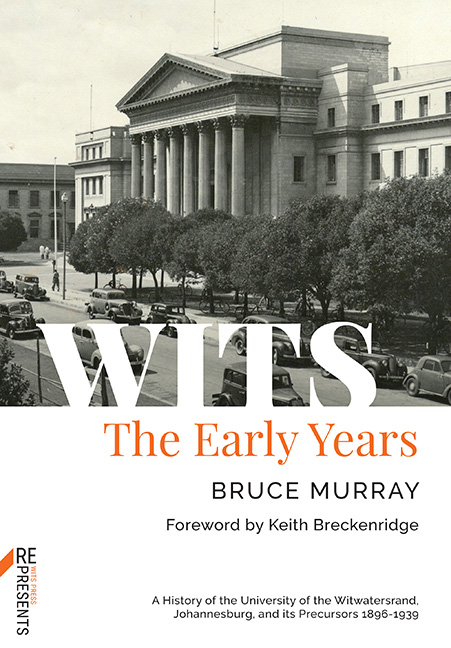4 - Administration, Finance, and Buildings
Published online by Cambridge University Press: 24 November 2023
Summary
During its first six years the University of the Witwatersrand was served by two Principals. Jan Hofmeyr resigned in early 1924, and was succeeded by Sir William Thomson, who held the office until the beginning of 1928. Although their terms of office were short, their principalships were of the first importance for the development of the new University. Hofmeyr certainly left a distinct impression on the University.
Under its private Act the University was empowered to establish Faculties or Departments of Arts, Science, Commerce, Law, Medicine, Engineering, Education, Music, and Veterinary Science. In 1922 the first six were established as faculties, the last three as departments. At the beginning of 1922 there were 37 departments, and 73 members of the academic staff, including 33 professors, 12 senior lecturers, 7 lecturers, 9 junior lecturers, 3 demonstrators, 3 instructors, and 6 part-time lecturers in law, banking, medicine, and surgery. Six years later, when Humphrey Raikes took over from Sir William Thomson as Principal, the number of departments had risen to 48, and the academic staff to 191, of whom a third were officially classified as part-time. Over the same period the total number of students rose from 1 030 to 1 476. The Faculty of Arts by 1928 was firmly established as the largest single faculty with 13 departments and 571 students.
In any small university, and particularly a new university, the quality of its teaching departments depends very heavily on the calibre of its departmental heads. Whether by luck, or good judgement or some combination of both, the new University of the Witwatersrand succeeded in assembling, by the standards of the time, an excellent professoriate. With the assistance of a London committee, most had been recruited from overseas, a fairly high proportion being Scots, but even at this early stage there were several South Africans. A feature of the professorial team assembled under Hofmeyr and Thomson was the long service many of its members were to give the University. It was essentially the team that was to lead the University into, and through, the thirties.
The principalships of Hofmeyr and Thomson also saw the campus at Milner Park assume its basic shape.
- Type
- Chapter
- Information
- WITSThe Early Years, pp. 93 - 124Publisher: Wits University PressPrint publication year: 2022



